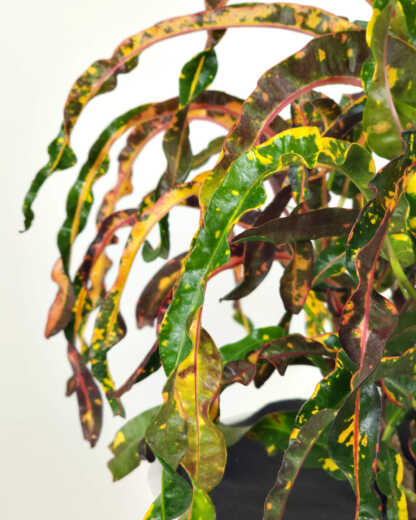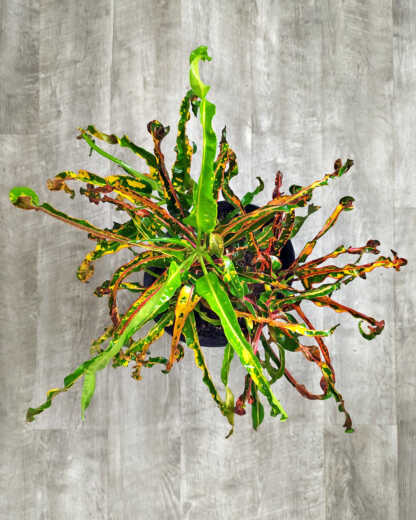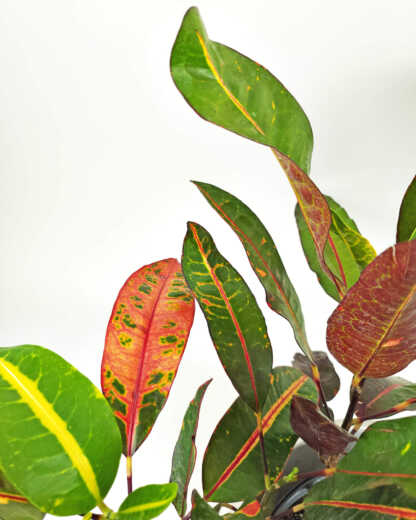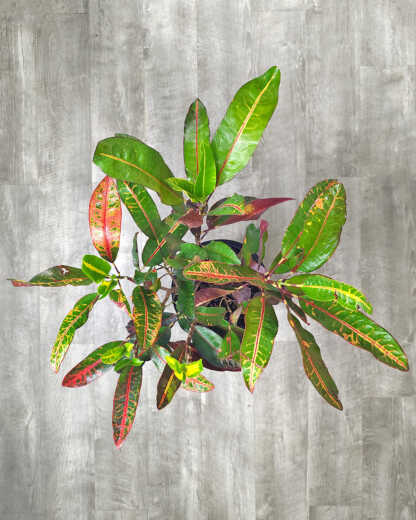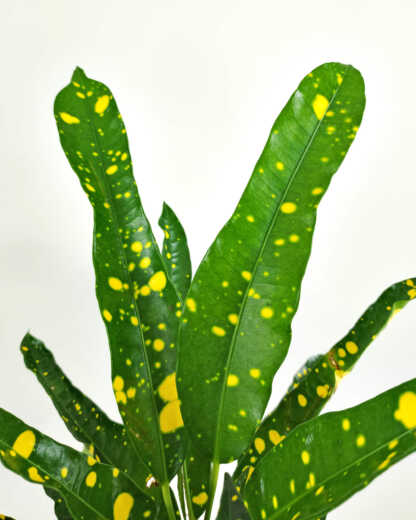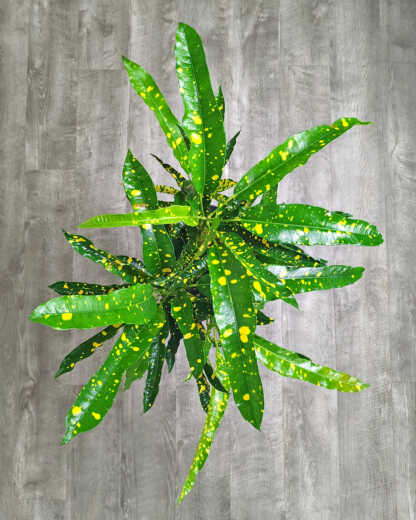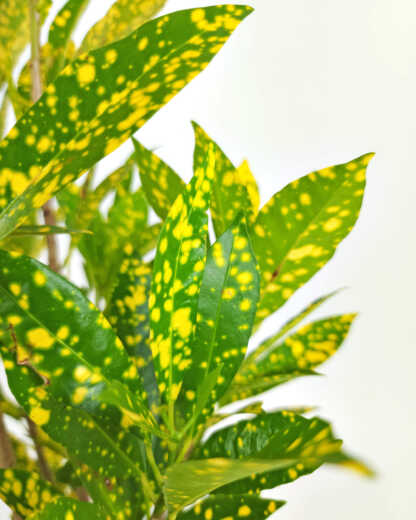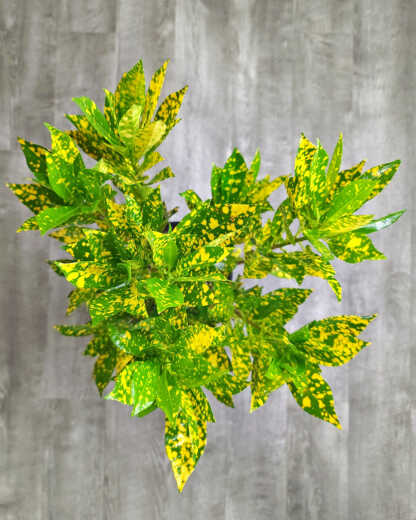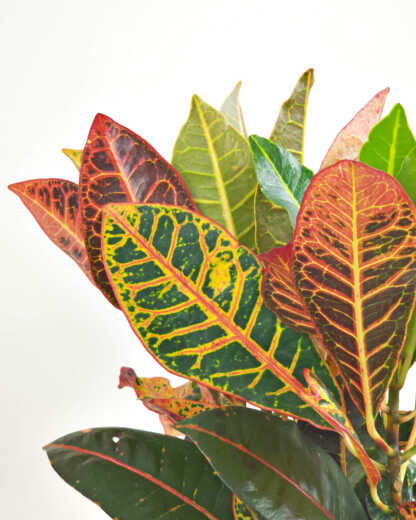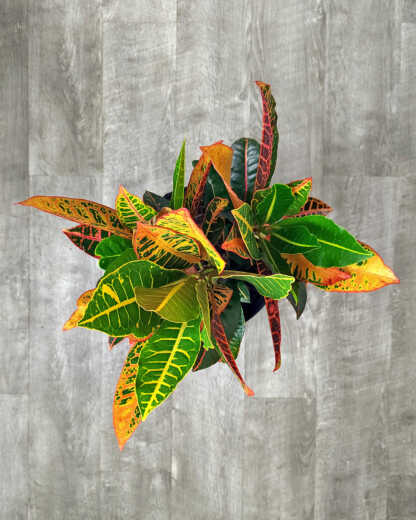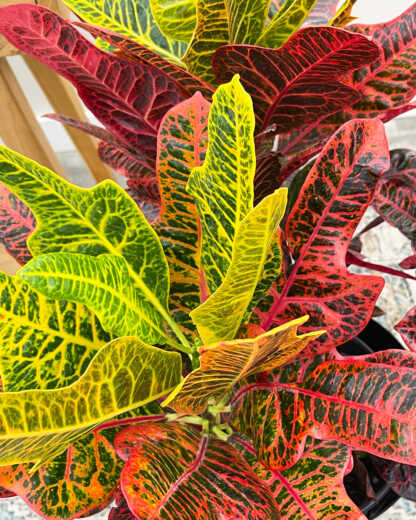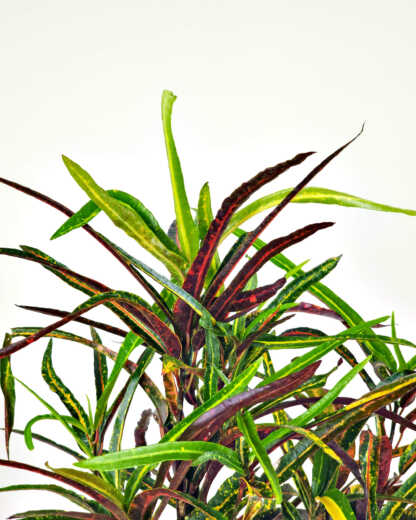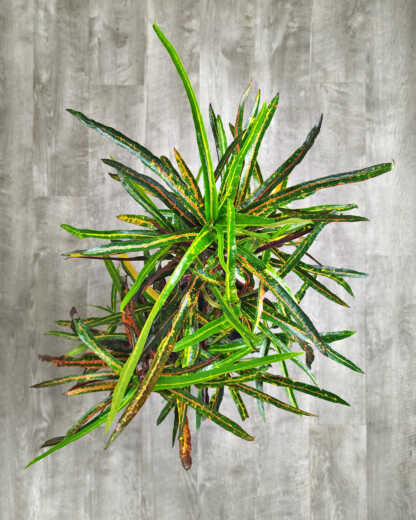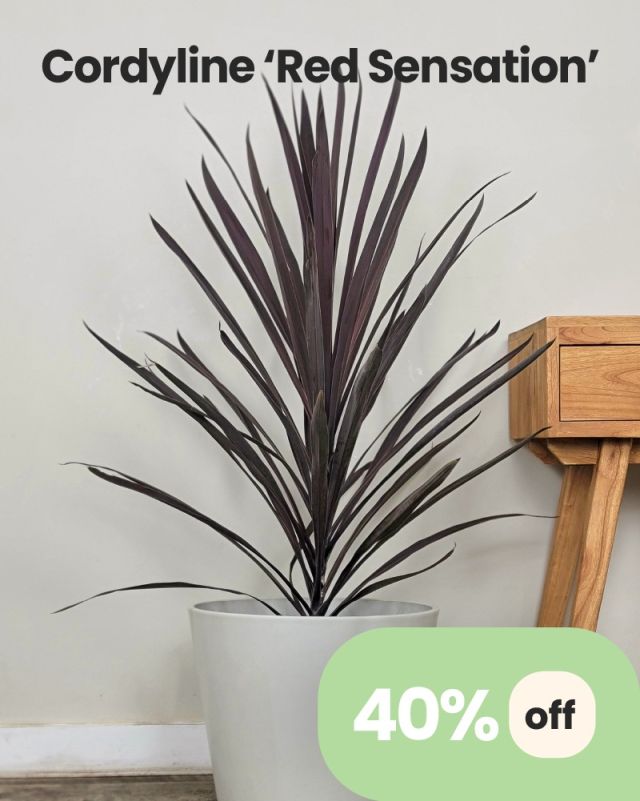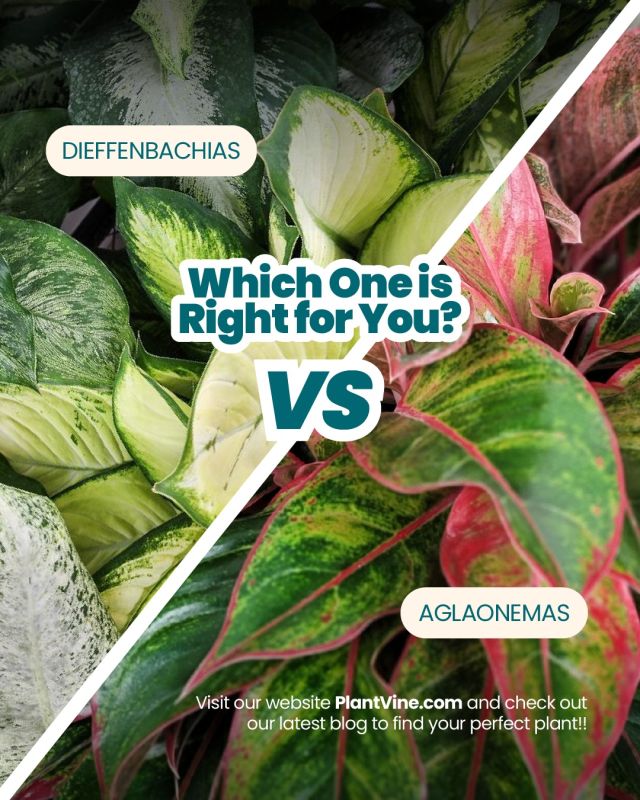Croton Varieties
Codiaeum at a Glance
Croton plants, scientifically known as Codiaeum variegatum, are vibrant and striking houseplants celebrated for their brilliantly colored foliage. Originating from the tropical forests of Southeast Asia and the Pacific, these plants have made a name for themselves in the world of indoor gardening due to their unique appearance and adaptability.
The most striking feature of croton plants is their leaves, which come in a kaleidoscope of colors, including yellow, red, orange, green, and even purple. These colors often mix in diverse patterns across each leaf, creating a vivid display that can brighten any space. The leaves themselves are quite variable in shape, ranging from slender and elongated to broad and lobed, adding to the plant’s ornamental appeal.
Croton plants are not only visually stunning but also have a fascinating history and cultural significance. In many cultures, they are used in traditional medicine and hold symbolic meanings, often associated with transformation and change due to their ever-changing leaf colors.
Croton Care Information
Botanical name: Codiaeum sp.
Light: Low to medium sunlight, prefers shade.
Water: Requires regular watering to keep soil moist but not saturated
Soil: Well-draining and lightweight soil.
Humidity: They do best in high humidity conditions but will tolerate average humidity.
Propagation: Can be propagated by separating new offshoots from a mother plant.
Toxicity: Sap can be an irritant and mildly toxic to pets

